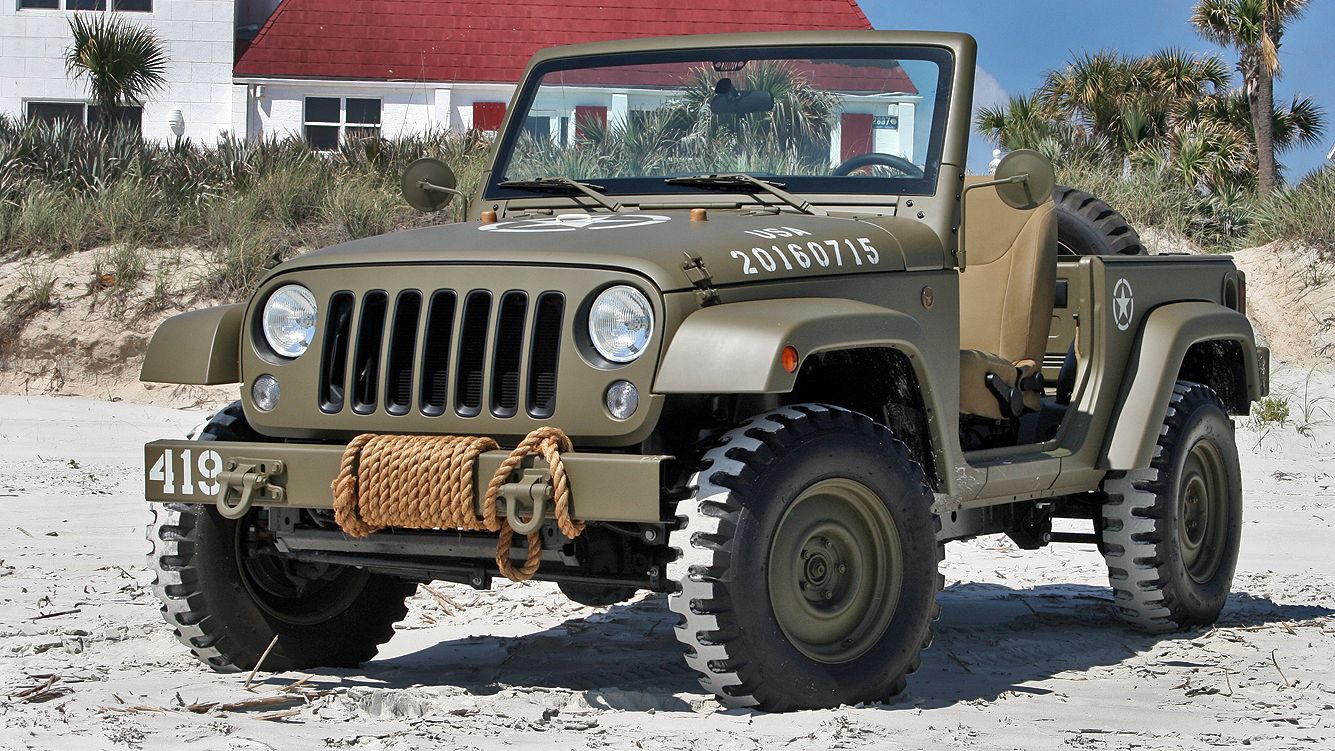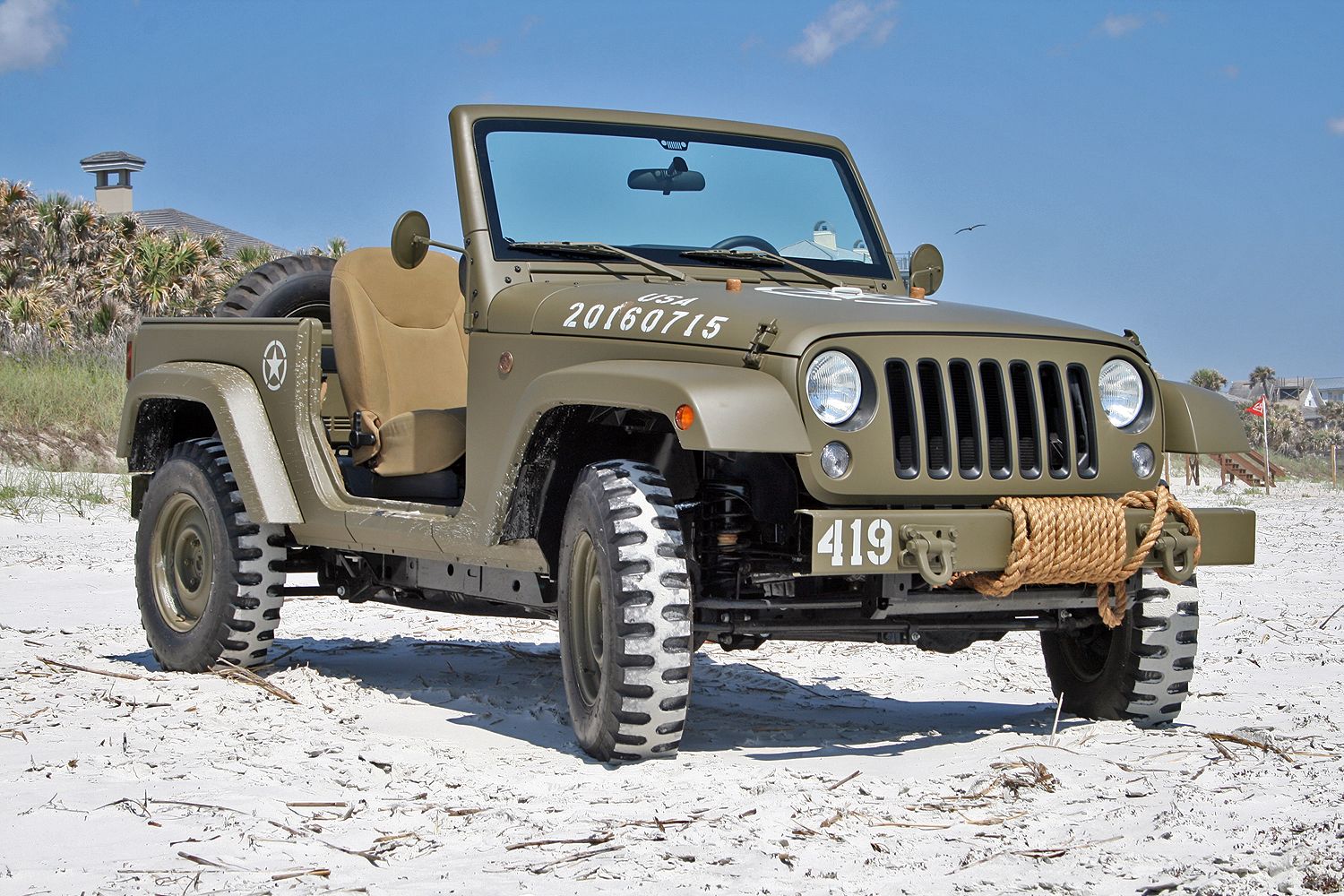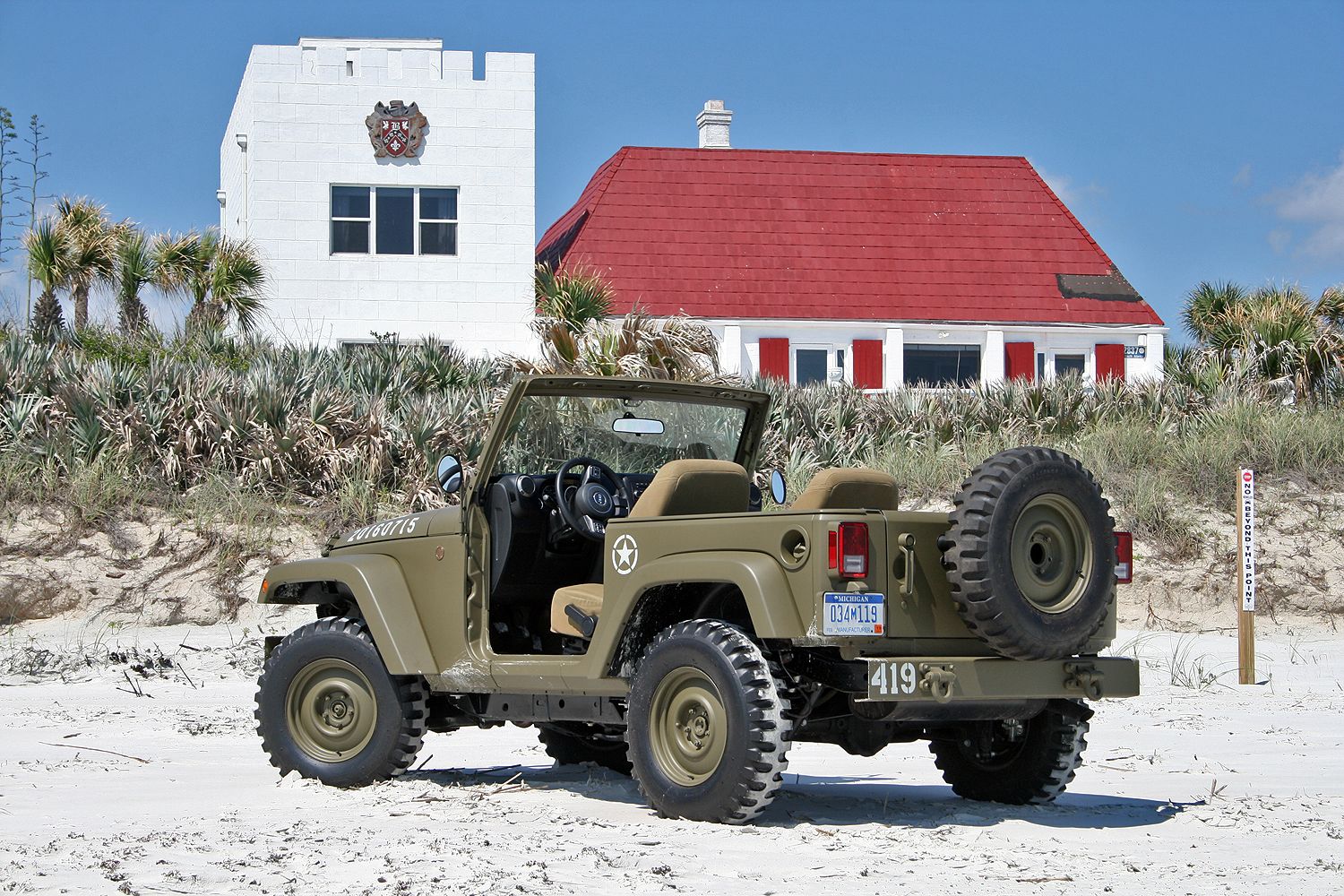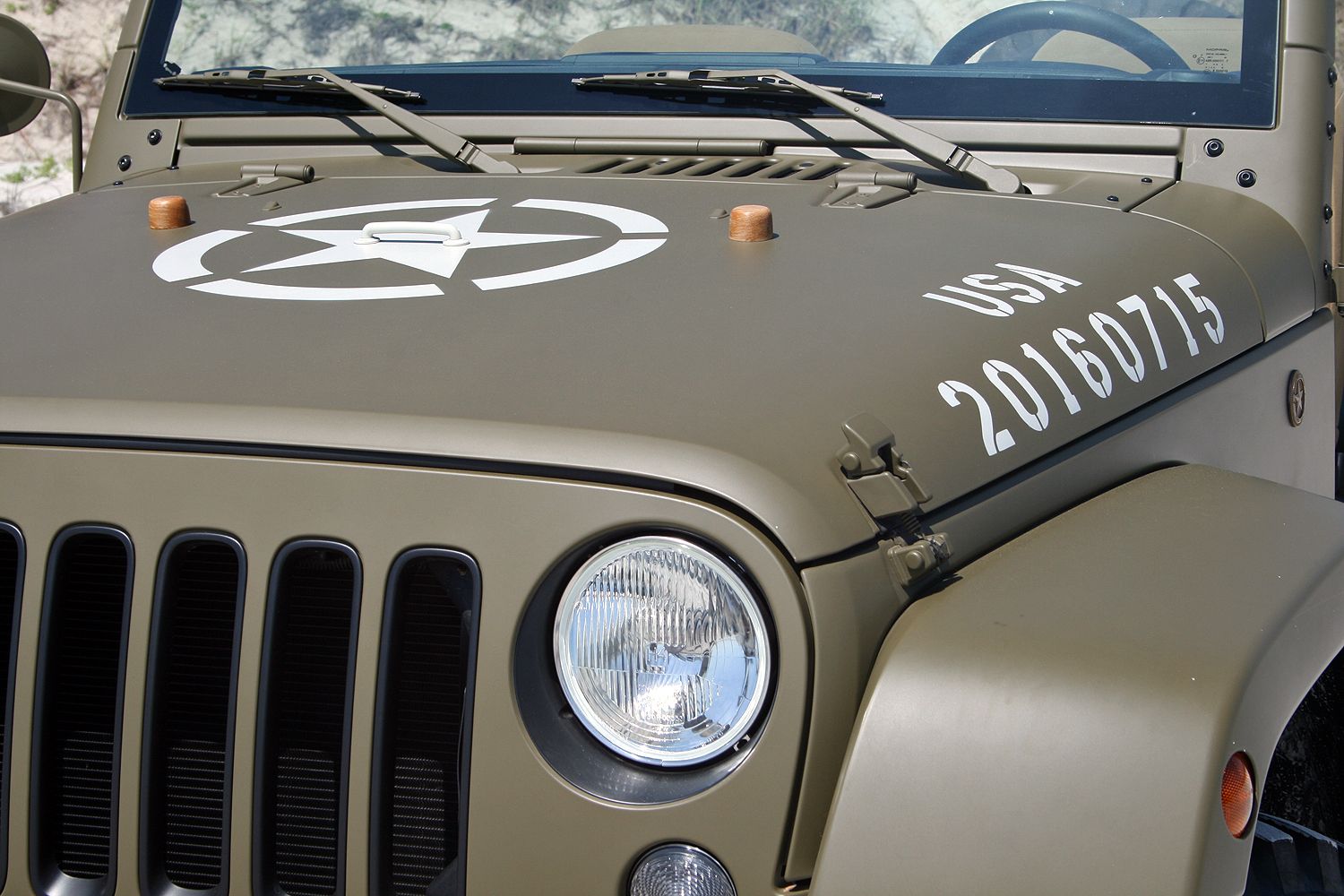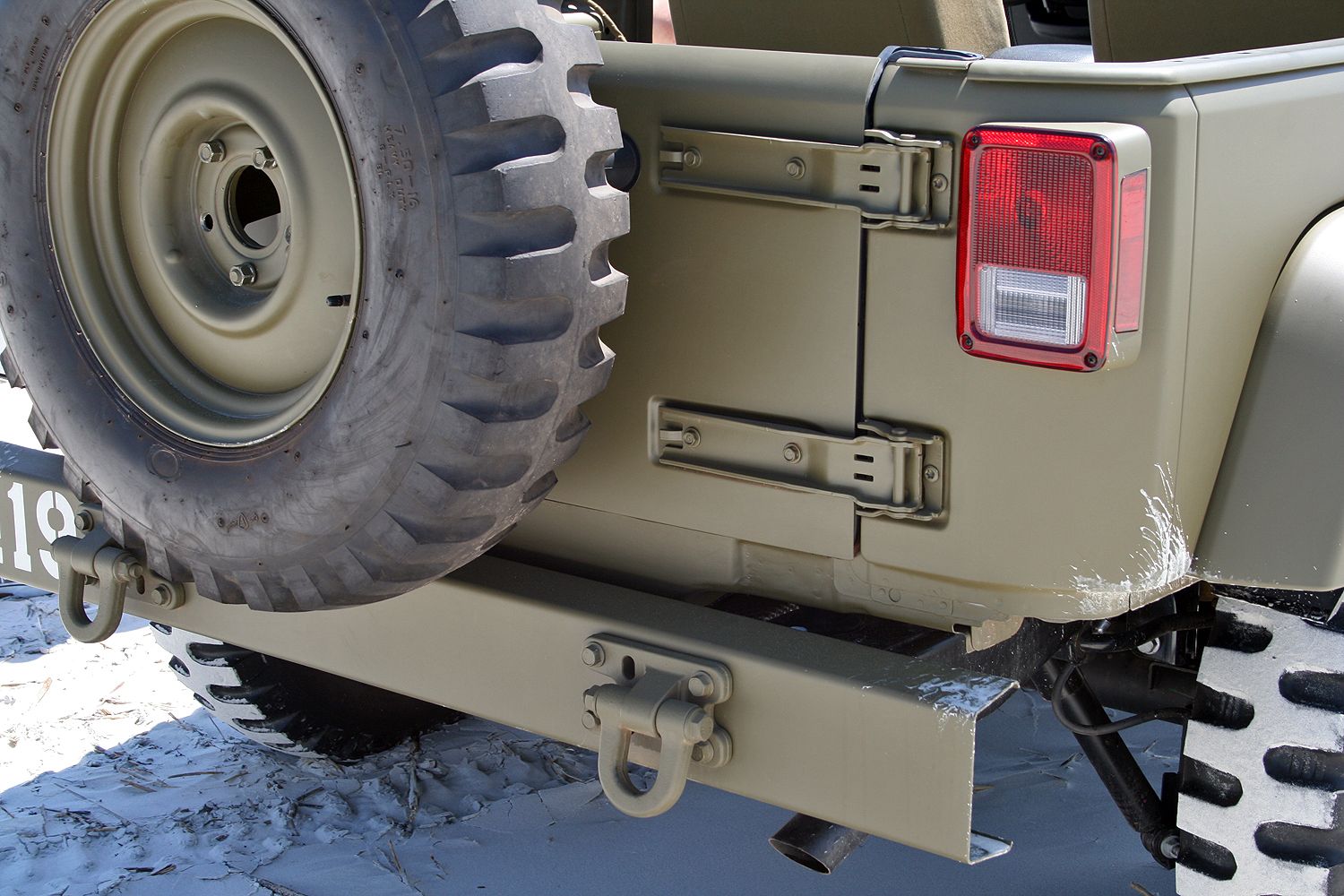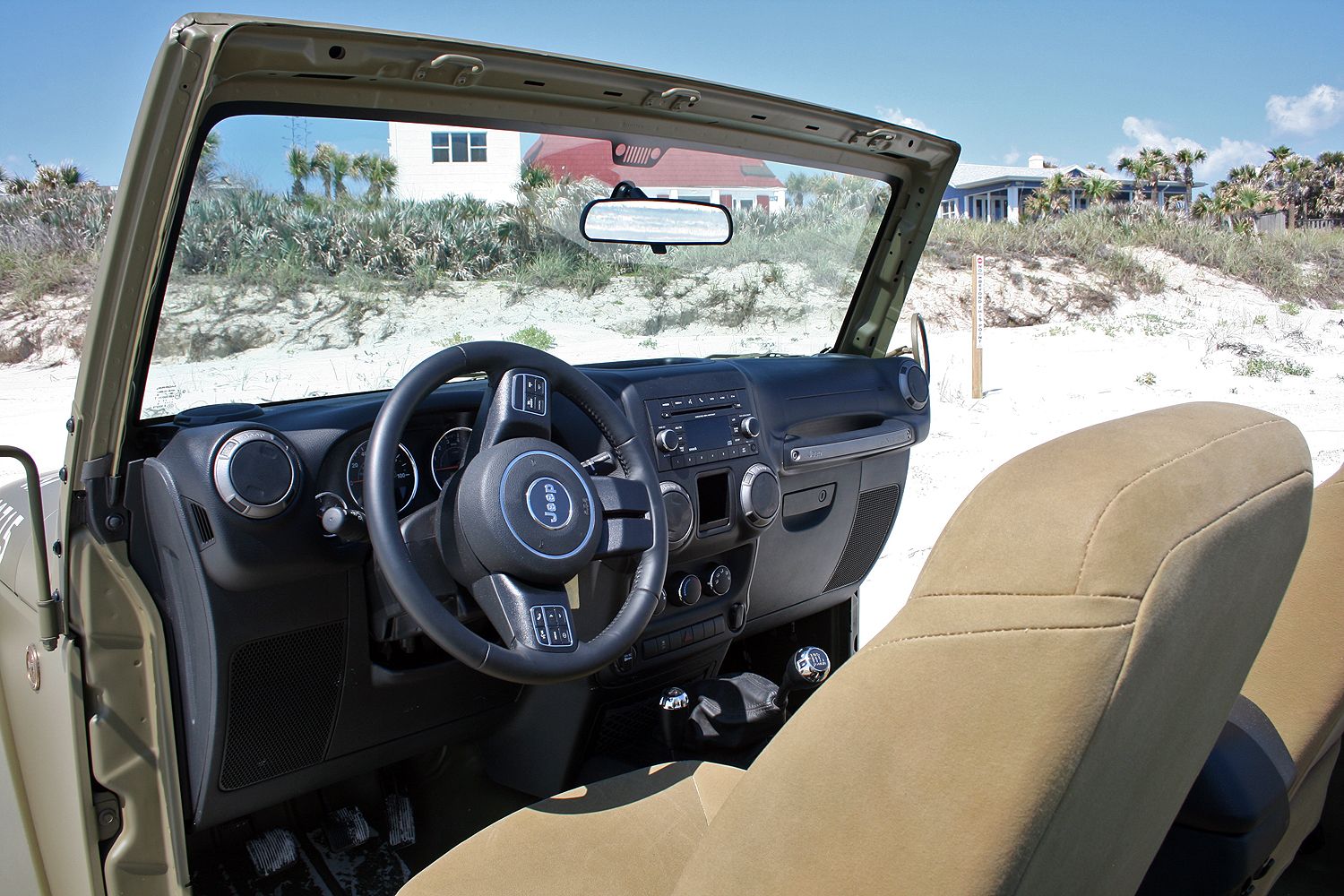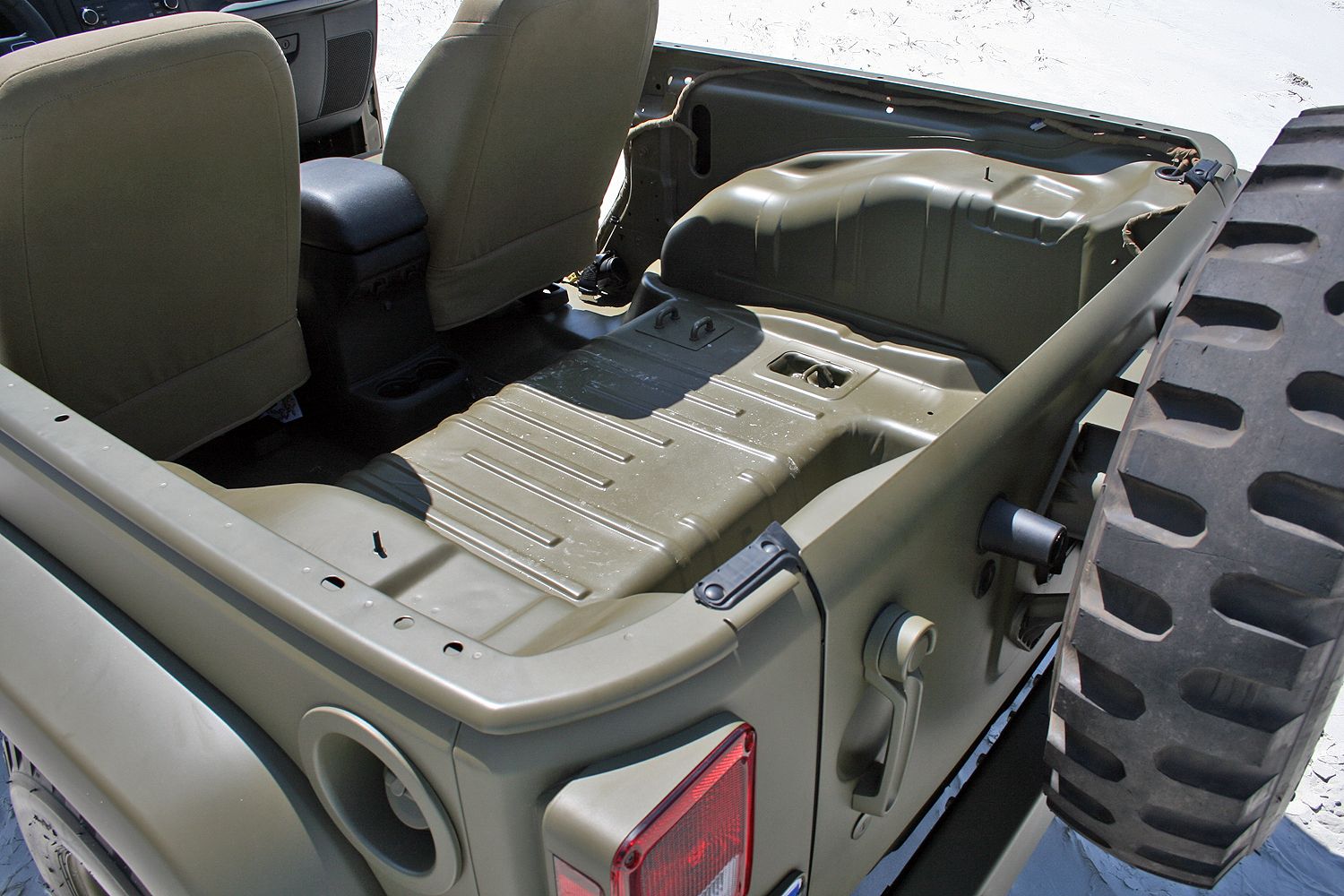Everyone knows Jeep’s long and storied history began with the onset of WWII. The original Jeep, the Willys MB, was the answer to the U.S. War Department’s need for a lightweight, go-anywhere reconnaissance vehicle. Willys-Overland developed the design, while Ford assembly lines helped meet production requirements. Fast-forward 75 years to 2016, and Fiat Chrysler’s Jeep division built a one-off commemorative recreation of the MB using the modern Wrangler. The result: the Jeep Wrangler 75th Salute. And thanks to the 2017 Jeep Beach gathering, the Salute and I stormed the beaches of Daytona, Florida, some 4,300 miles east of Normandy.
There were no mortar shell or .30 caliber rounds whizzing by, but the 75th Salute and I were shot with plenty of stares, pointing fingers, and camera shutters. The Jeep certainly commands attention, especially juxtaposed to the sea of shiny Wrangler JKs with 20-inch chrome wheels and LED light bars. The Salute stands out in its simplicity, armed only with a hemp recovery rope for an accessory. Even that was standard issue in 1941.
The 75th Salute is based on a 2016 Jeep Wrangler Sport, though this commemorative build didn’t start by plucking a zero-mile Wrangler off the assembly line. The story is quite involved, actually. As Brandon Girmus, the Wrangler Brand Marketing Assistant and father of the Salute, explained, this Wrangler was destined to be special from the beginning. The body tub was snatched before it entered the paint booth and sent to a separate location for its Olive Drab paint and white markings. It was then re-inserted onto the assembly line. The various specialized components like its wheels, tires, seats, and bumpers were all staged along the assembly line, all coordinated by Girmus and his team. Rather than plastic bumpers and alloy wheels, Jeep workers bolted on these pre-made and pre-staged parts.
Unnecessary components simply weren’t installed, including the rear seat, roll bars, doors, windshield trim, and carpet. Even air conditioning was left out, which is unbelievable still an optional extra on the base Wrangler Sport. What is includes is the standard 3.6-liter Pentastar V-6, the six-speed manual transmission, the part-time 4WD system, and all the standard Wrangler underpinnings. And because the Willys MB didn’t have locking differentials or an electronically disconnecting front sway bar, these items were purposefully avoided; yet another reason Jeep chose the Sport trim.
Special attention was paid to ensure the Salute accurately depicts the Willys MB. The Olive Drab paint is the exact hue used by Willys and Ford during the war. Jeep contacted a leading Willy MB restoration company to confirm the paint code’s authenticity. Reproduction Firestone unidirectional military tires are mounted on steel wheels built especially for this project. Even the lug nuts are special – ordered to look authentic yet work with the assembly line’s pneumatic lug wrenches. The factory Wrangler seats were cut short and reshaped into low-back buckets. They are covered with the same tan canvas used during the war.
It might look 75 years old, but the Salute drives like it’s brand new. Of course, that’s because it is. The Wrangler JK’s driving dynamics are all intact here, well, as far as I can tell while driving at 10 mph on sand. Daytona has a rather strict speed limit. The manual transmission provides easy shifting and the steering is power-assisted – something not offered on a Jeep till long after the war. The skinny Firestone military tires surely have a negative effect the Wrangler’s on-road handling, not that anyone would try storming a racetrack rather than a beachhead or hedgerow.
But the Salute isn’t just a stoic recreating of a fighting machine. As in modern Jeep fashion, the 75th Salute is covered in Easter Eggs. The numbers on the hood, that’s the date the Salute rolled off the assembly line. What’s more, July 15, 2016 is exactly 75 years after the U.S. government awarded Willys-Overland its contract. The numbers on the bumpers, well, 419 is the telephone area code for the Wrangler assembly plant in Toledo, Ohio. Copper badges with commemorative script replace the typical “Trail Rated” fender badges. Diehard Jeep fans will recognize the bumpers, too. They’re off the military-spec Jeep Wrangler J8, which the automaker exports to governments around the world. Other J8 parts include the sealed-beam glass headlights and coil-spring hood latches. Girmus says the metal springs are designed to weather extreme sun better than the rubber hood latches on the civilian Wrangler.
While the current Jeep Wrangler JK is a very modern take on the original, the Jeep still maintains that mid-century look. The slotted grille, flat(ish) fenders, open doors, short wheelbase, and solid-axle construction all hark back to a tumultuous time in world history. FCA’s Jeep Brand should be commended for keeping its history alive and honoring those who served our nation in war. It’s fantastic to see history remembered so vividly.

